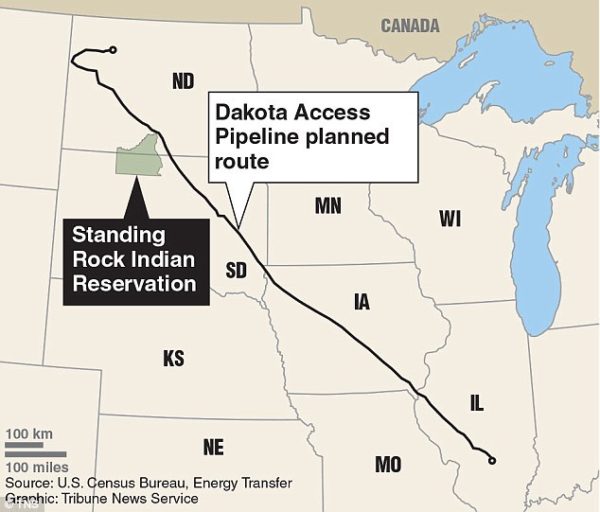“Standing Side by Side in Peaceful Prayer” Starting in April 2016, thousands of people, led by Standing Rock Sioux Tribal members, gathered at camps near the crossing of the Missouri and Cannon Ball Rivers to stop the construction of the Dakota Access Pipeline (DAPL) there- creating the #noDAPL movement. DAPL is a 1,172-mile pipeline for transporting crude oil from North Dakota to refineries and terminals in Illinois.
As a business venture, DAPL’s advocates claim the pipeline will meet the highest environmental safety standards. They also claim the venture will produce greater U.S. energy independence and jobs at the same time it lessens the environmental risks of oil trains, though it is opaque how the new pipeline could increase oil production, oil consumption, employment, and state tax revenues.

The #NoDAPL movement sees the pipeline as posing risks to the water quality and cultural heritage of the Dakota and Lakota peoples of the Standing Rock Sioux Tribe. Part of DAPL’s construction is occurring on lands and through waters the….click here for full article.
Article by Kyle Whyte, academia.edu.
Supplemental- News about Dakota Access Pipeline


Leave a Reply
You must be logged in to post a comment.